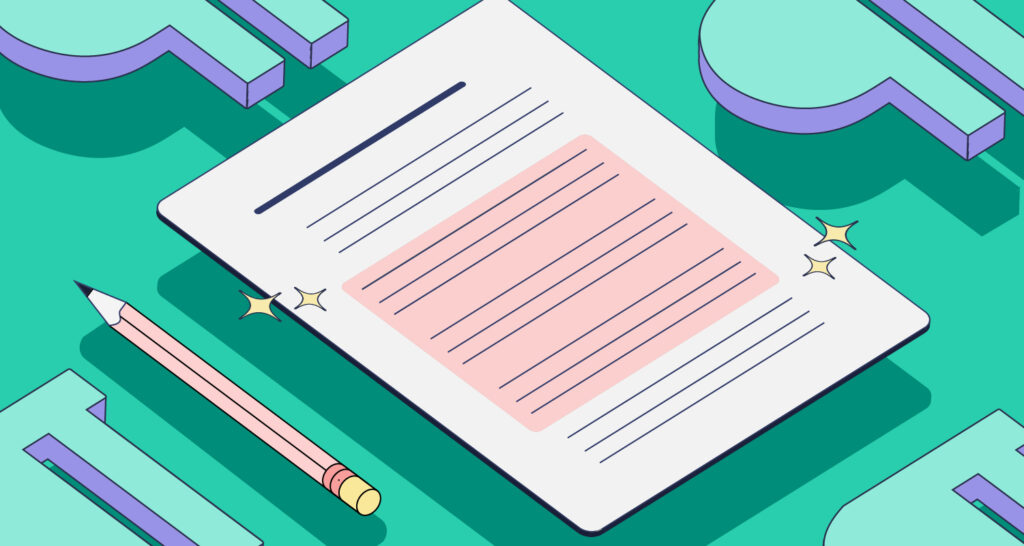Lesson 3: Body Paragraphs & Conclusion
Estimated Time: 35 minutes
Learning Objective: By the end of this lesson, you will be able to craft a body paragraph using the block method.
Body Paragraphs & Conclusion

Last time we talked about the structure of the body paragraphs for a problem-solution essay. Now we are going to talk about the body paragraphs and the conclusion. There are two ways you can organize the body paragraphs, one is a block structure, where you separate the problems and their solutions in different paragraphs, and the other is a point-by-point structure where you write about the problem and its solution in each body paragraph. In this course we are going to use the block method. In our last video we talked about the thesis statement. The thesis statement has to:
- Express the general problem
- Give the solutions, or hints about the solution that may solve the problem
Example thesis statement:
University students often feel demotivated at the end of the semester, however this can still be prevented by studying in groups and using aromatherapy.
In this example the first part University students often feel demotivated at the end of the semester is expressing the general problem and then two possible solutions studying in groups and using aromatherapy refers to the solutions.
Introduction
Body paragraph 1: Problem: university students feel demotivated at the end of the semester
Body paragraph 2: 1st Solution: studying in groups
Body paragraph 3: 2nd solution: using aromatherapy
Conclusion
Introduction
Body paragraph 1: Problem: university students feel demotivated at the end of the semester
Body paragraph 2: 1st Solution: studying in groups
Body paragraph 3: 2nd solution: using aromatherapy
Conclusion
When you brainstorm your ideas for problem solution essays, think about what the problem is. You need to start with a clear vision of the problem itself. Once you have broken your problem down and looked at it from different angles, sit back and look at the big picture and think how you will explain it and what the effect is. Then define the problem and think about your ultimate goal in solving the problem. Don’t just describe the problem in bland definitions. You have to describe it from the readers’ eyes. Introduce the subject in a way that will make the reader take interest. Why does this problem matter? Why should they care? Remember, the reader has to be convinced that the problem really needs to be solved.
In the next two body paragraphs the writer explains the solutions. It’s important to remember that you are writing in such a way to persuade your reader that these solutions are really the best. So make sure to use strong persuasive language. Use modal verbs to make suggestions in solutions paragraphs.
When you come to brainstorm your solutions, think of the key ‘actors’ who are involved. Sometimes it is the government and individuals in some way or another. But there may be another group specifically related to the topic. For example, in our topic other students, study groups:
“Study groups are a great way to ensure productivity. Being surrounded by people with a shared responsibility can also help motivate you. Study groups are great for sharing notes, developing new study techniques, and helping each other understand the material.”
When you are developing your solutions try to make sure that they are not too simplistic. It’s all too easy to make sweeping generalizations about what people or things can do.
For example, look at this idea:
Aromatherapy can help you stay focused on your studies.
It is common to see such statements in students’ essays with no further explanation. Give more detail about how or why this would work. For example:
“Aromatherapy is the use of plant-derived aromatic oils to achieve benefits ranging from reduced anxiety to concentration and stress relief. Some great essential oil blends specifically for concentration include peppermint, eucalyptus, and rosemary. Numerous studies have been done on essential oils to improve memory and focus.”
And finally let’s talk about the conclusion. Your conclusion paragraph should start by restating your thesis. Then you should discuss your problem more generally and apply the solutions to the general context you established in your introduction. Try to emphasize the solutions, not the problem. You can end this paragraph with a closing statement that is a suggestion, prediction, opinion, or question. You can think of this part of a problem/solution essay as encouraging your reader to go make a change, call-to-action.
Explore Further
Looking for more examples? Read all about writing problem-solution essays on the edtechbooks.org website.
